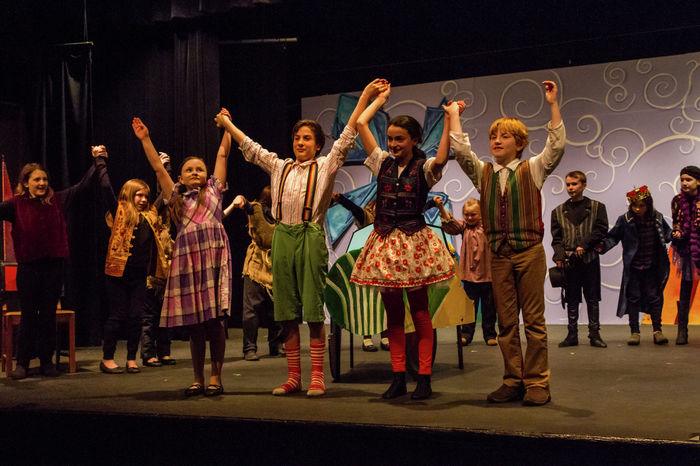High school theatre: endless renditions of Bugsy Malone, or something more?
Columnist Stanley Lawson discusses the importance of formative experiences with theatre in high school, and how musical theatre in particular is particularly accessible to those for whom access to theatre has previously been difficult.
Stage musicals are not generally regarded as ‘high’ art. This is especially true of musicals adapted from popular existing films; generally based on either teen comedy-drama or Disney films – shows like Hairspray, The Heathers, Bugsy Malone and Beauty and the Beast. They are easily written off as commercial ventures rather than artistic endeavour and are often looked down upon as escapist frivolity by their critics – a category apart from ‘serious’ theatre. While some of these musicals are indeed overdone, unchallenging, and gimmicky, they also can be the most egalitarian form of theatre. I should also add that ’egalitarian is not a term of insult or even aesthetic judgment; West Side Story – one of the most popular musicals performed in schools – was composed by one of the most respected composers of the 20th century.
“...productions can become a community endeavour within a school”
Aided by high school drama departments across the country (especially outside major cities) these musicals are the entry point onto the stage for many young people for whom access to theatre is financially, geographically, or culturally difficult. For many schools like the one I attended between the ages of 12 and 16, the show they staged each year had to break even in order for there to be a show the next year. Most parents didn’t want to pay to spend an evening watching someone else’s kids playing Romeo and Juliet. These musicals, with characters and songs already embedded in the mainstream cultural conscious, are both a draw for audiences and an opportunity to engage a large number of students to be in the cast. A smaller cast would turn high school theatre into an exclusive hobby which side-lines other potential talent, open only to those students whose parents have been paying for extracurricular music, dance and drama lessons for years. Moreover, a large cast is a draw for ticket sales; by making productions financially viable in the face of the government’s chronic underfunding of the performing arts in state schools, teachers perform the vital task of widening access to a sector riddled with a class-access problem.
Large casts and recognisable music are not just about ticket sales, however; by staging a well-known show with accessible themes, teachers engage teenagers in theatre which is more likely to speak meaningfully to them, encouraging students who may otherwise not have auditioned to join the cast. With casts sometimes running into the dozens, productions can become a community endeavour within a school, which teachers and family members buy into – therefore positively reinforcing students’ efforts. Additionally, the camaraderie among the cast of mostly first timers is often a supportive environment in which theatrical and musical talent can begin to blossom. This shared experience of beginning can forge some of the most meaningful friendships of our adolescence, and, as theatre so often does, provide a space for the marginalised to explore their talents and their identities.
“... the camaraderie among the cast of mostly first timers is often a supportive environment in which theatrical and musical talent can begin to blossom. ”
All this is not to claim that musicals are the ‘best’ form of theatre, or that is the only form of theatre which can be used in access programmes, or that they are my personal favourite. The genre has its drawbacks; popular musicals are especially likely to buy into the structures which theatre is supposed to challenge and occasionally are guilty of reinforcing the boundaries which the best theatre pushes. Yet, theatre can’t push boundaries or challenge these structures unless it draws its practitioners from all areas of society. So many practitioners and plays profess a deep desire to use theatre as a force in society for positive change, or to shape people’s lives, yet how they expect theatre to do this when the door is often slammed on the fingers of budding actors, writers, and directors in their adolescence never ceases to baffle me. Musical theatre in high schools is far from a solution to class access issues, but the fact that sections of the theatre community look down their collective noses at it most certainly will not help. These shows can be an exciting first experience and foster a love for the theatre that might have otherwise go untended.
 News / Caius mourns its tree-mendous loss23 December 2025
News / Caius mourns its tree-mendous loss23 December 2025 News / Clare Hall spent over £500k opposing busway 24 December 2025
News / Clare Hall spent over £500k opposing busway 24 December 2025 Comment / The ‘class’ of Cambridge24 December 2025
Comment / The ‘class’ of Cambridge24 December 2025 Comment / Yes, I’m brown – but I have more important things to say22 December 2025
Comment / Yes, I’m brown – but I have more important things to say22 December 2025 Interviews / Politics, your own way: Tilly Middlehurst on speaking out21 December 2025
Interviews / Politics, your own way: Tilly Middlehurst on speaking out21 December 2025








